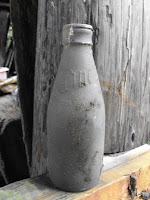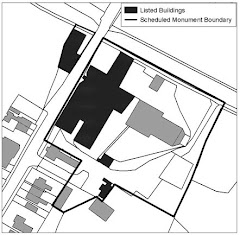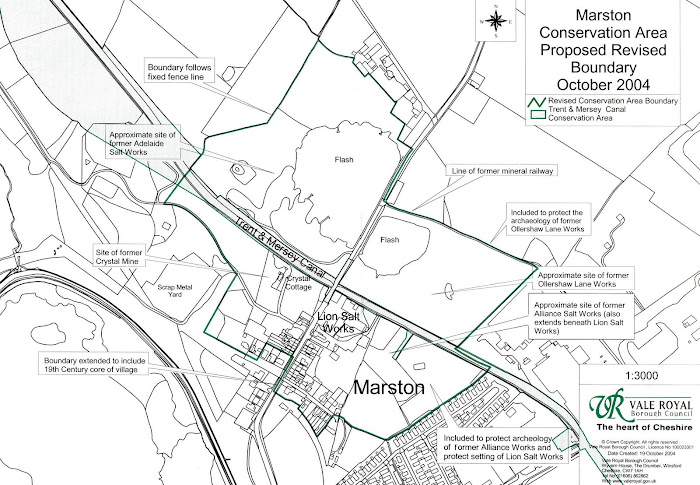
At the end of the third week preparations are well advanced to prepare the site and buildings for the main works schedule. The grounds have been cleared of vegetation and is ready to be 'stoned up' to give a stable working surface. The old security fence has been removed and scaffolding is starting to arrive on site.
Next week the ground surface will be surveyed, and a laserscan survey will be completed in the stove areas of Pan House 1, 3, 4 and 5 and around Pan No 5.

 Scaffolding has started to be erected at the north end of the Loading Bay to allow working access to the overhead walkway between Stove House 5 and the main salt works complex. The scaffold will allow safe working for survey work prior to elements being labelled and dismantled.
Scaffolding has started to be erected at the north end of the Loading Bay to allow working access to the overhead walkway between Stove House 5 and the main salt works complex. The scaffold will allow safe working for survey work prior to elements being labelled and dismantled.
 Pan House 5 was the last pan house to be constructed and used at the Lion Salt Works. It was built in 1965. The roof structure over the pan collapsed some time ago and was removed, but the hurdles either side of the pan remained, collapsed beside the pan at 45 degrees.
Pan House 5 was the last pan house to be constructed and used at the Lion Salt Works. It was built in 1965. The roof structure over the pan collapsed some time ago and was removed, but the hurdles either side of the pan remained, collapsed beside the pan at 45 degrees.The decayed planks were first removed to reveal the supporting joists. Excess brine would seep from the salt that had been raked from the salt pan to drip into the drainage gulley below the hurdles.
Holding the 2m ranging rod is Gareth Wilkes, pupil at The Grange School, Hartford who spent this week helping at the site as part of a work experience placement. The hurdle platform would have extended from the side of the salt pan (on the right) to the outside wall which sat on top of the dwarf wall to be seen on the left. The hurdle would have enabled salt blocks to be wheeled into the brick Stove House through the door that can be seen above Gareth's head.
You can see the roof line of the Pan House where it joined the Stove House. The SE corner of the stove house has collapsed but this enables you to see the warehouse floor where the salt blocks were stored after they had been dried in the stove house (also caled a hot house - or te 'otters)

Gareth helped catalogue some of the finds that are being made during these enabling works. A variety of artefacts have been found. On the left, a milk bottle was found in the Loading Bay area, possibly dating to the 1950's. It came from Horner's Creamery at Cuddington.

Heavier and more substantial are a group of railway 'chairs found around the Brine Pump. Probably lifted from the private railway siding they are cast with the letters LMSR.







No comments:
Post a Comment
Please leave your cmments about the work to restore the Lion Salt Works.